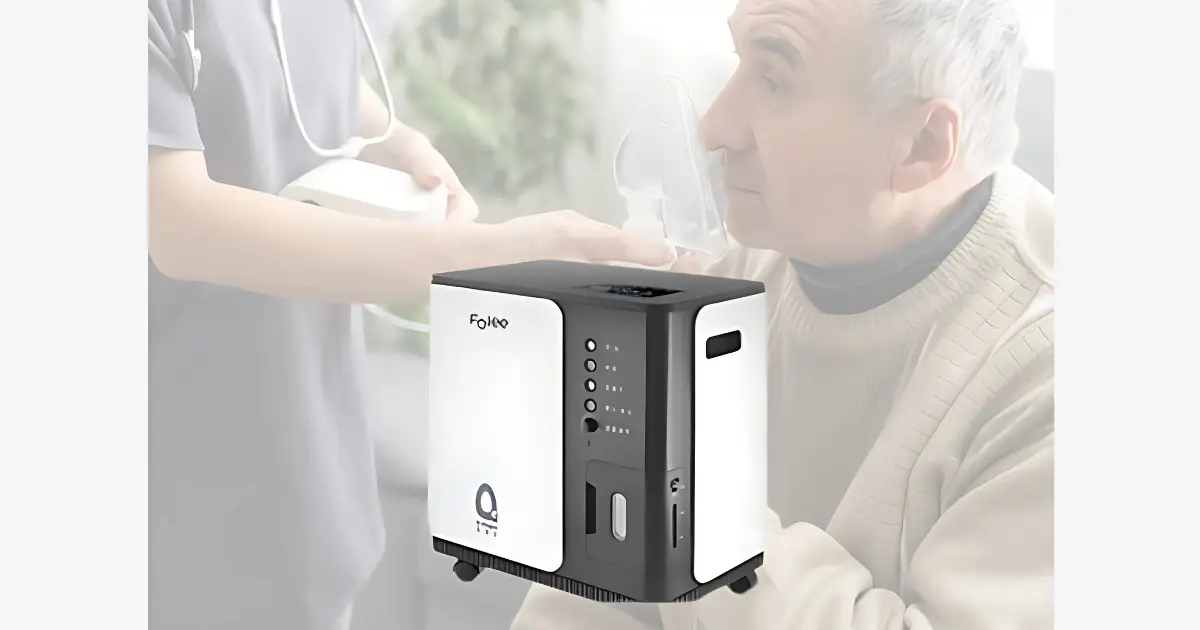In recent years, oxygen concentrators have become essential medical devices for people with respiratory issues. Whether you or a loved one suffers from conditions like COPD, asthma, or other lung diseases, an oxygen concentrator can make a world of difference. But what exactly is an oxygen concentrator, and why is it so important for those with breathing difficulties?
What Is an Oxygen Concentrator?
An oxygen concentrator is a medical device that delivers purified oxygen to individuals who have low oxygen levels in their blood. Unlike traditional oxygen tanks, which store oxygen in a pressurized form, oxygen concentrators extract oxygen from the surrounding air, filter it, and deliver it at a higher concentration to the user.
These devices are particularly valuable for people who require continuous or supplemental oxygen therapy. Most oxygen concentrators are designed to provide either:
- Pulse-dose oxygen: Delivers oxygen only when the patient inhales, conserving power and extending battery life.
- Continuous flow oxygen: Provides a constant stream of oxygen regardless of the patient’s breathing pattern.
Who Needs an Oxygen Concentrator?
Oxygen concentrators are typically prescribed for individuals with conditions that affect lung function and reduce oxygen intake. These include:
- Chronic Obstructive Pulmonary Disease (COPD): A progressive disease causing difficulty in breathing.
- Emphysema: Damage to lung tissue reduces air exchange efficiency.
- Asthma: Severe asthma attacks may require oxygen supplementation.
- Pulmonary Fibrosis: Lung scarring that limits respiratory capacity.
- Heart Failure: Severe cardiac issues may result in low oxygen saturation.
For patients with these conditions, oxygen concentrators can be life-saving by helping maintain healthy oxygen levels and preventing complications like hypoxemia (low blood oxygen).
Types of Oxygen Concentrators
1. Stationary Oxygen Concentrators
These are larger units typically used at home. They offer continuous oxygen flow and require an electrical power source. Ideal for long-term, in-home oxygen therapy.
2. Portable Oxygen Concentrators (POCs)
Compact, battery-powered devices for users who need oxygen while traveling or moving around. They offer mobility and freedom for active lifestyles.
3. Pulse-Dose Oxygen Concentrators
Deliver oxygen only when the patient inhales, making them energy-efficient and well-suited for individuals with lower oxygen requirements.
4. Continuous Flow Oxygen Concentrators
Provide a steady stream of oxygen regardless of inhalation. Often used for patients with high oxygen needs or during sleep.
5. Dual-Flow Oxygen Concentrators
Can support two users simultaneously or deliver varying flow rates. Useful for shared home environments or patients needing flexible oxygen delivery.
6. HomeFill Oxygen Concentrators
Allow users to fill their own portable oxygen tanks using a stationary unit. Eliminates reliance on external refill services.
Conclusion
Oxygen concentrators are vital devices that have significantly improved the quality of life for people with respiratory conditions. They offer a continuous and often portable oxygen supply, enabling patients to stay active and healthy.
By understanding how these devices work and their types, you can make informed decisions for yourself or a loved one in need of oxygen therapy. Always consult a healthcare provider to choose the right concentrator based on your specific medical condition and lifestyle requirements.




